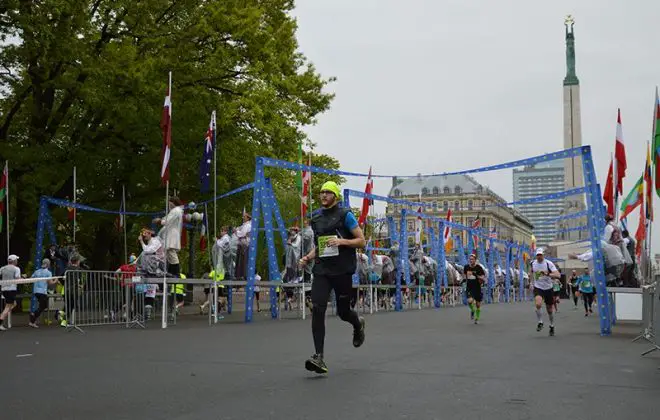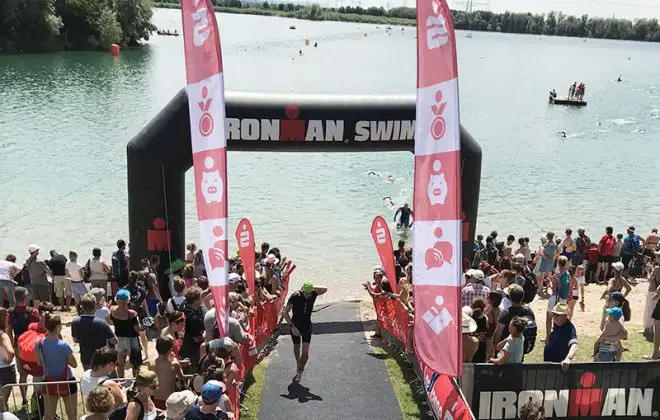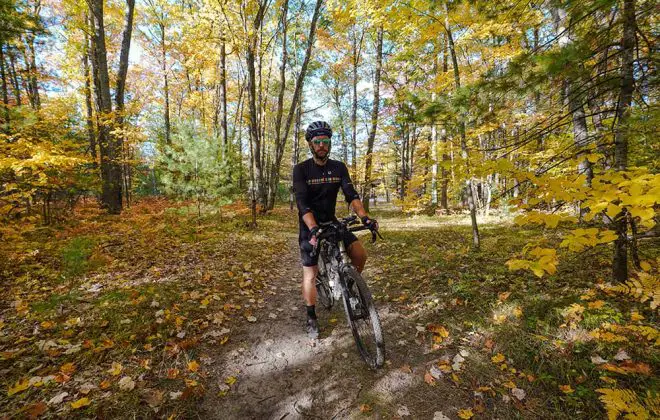IRONMAN 70.3 Luxembourg Race Report – My First Half Ironman
I stepped into an unknown territory this year, as I trained for my first middle distane triathlon – IRONMAN 70.3 Luxembourg . That’s a 1.9km swim, 90km bike ride and a 21.1km run race – all done in one go.
Just a couple of years ago I couldn’t even imagine doing something like this. The distance and length of the race made me feel both humble and inspired at the same time. Inspiration, however, eventually took over and there I was – in my wetsuit and ready to jump into the muddy Mosel river.
IRONMAN 70.3 Luxembourg was my first proper race of such length (not considering the 100K overnight kayak marathon we did for fun years ago). So, my goal was to finish and test my training, nutrition and pacing.
More importantly, though, to see how my body would respond.
Lead up to the race
My first actual triathlon, in fact, was 2 weeks earlier and twice as short. It was an Olympic-distance triathlon in Kraichgau, Germany and it didn’t go well at all. I crashed halfway through the bike course and wasn’t able to finish.
Nonetheless, I was able to be back to the start line 2 weeks later for the race in Luxembourg. The crash reminded me to stay more relaxed and don’t overthink it. In the end, it’s about enjoying the experience, not stressing about it.
Related: Kraichgau 5150 Race Or 7 Mistakes I Made In My First Triathlon
While DNF did force me to take it easy and recover, it might have caused some loss of fitness as well.
Friday: 2 days out
Generally, I don’t like arriving well in advance for the race. I noticed that I tend to spend all the extra time wandering around and not sleeping or eating well. And that stresses me out more than having more time for registration or administrative stuff.
Even for NYC marathon – when I had to acclimatize to a 6-hour time difference – I arrived only 2-3 days before the race. And that was quite enough for me.
So, that was the plan this time. I did an easy morning run with some very short speed pickups, put my bike in the car and drove.
The journey from from Munich to Luxembourg was not so long. It was only around 5 hours, but we did make a stop for lunch, to avoid sitting for too long.
Having learned my lesson, on the way to the hotel we drove through some parts of the IRONMAN 70.3 Luxembourg bike course. That really helped me to get a feeling of what kind of climbs and descents to expect.
Saturday: 1 day out
We arrived on Friday just minutes after information closed and I couldn’t pick up my bib straight away. So, on Saturday morning we were back at the expo.
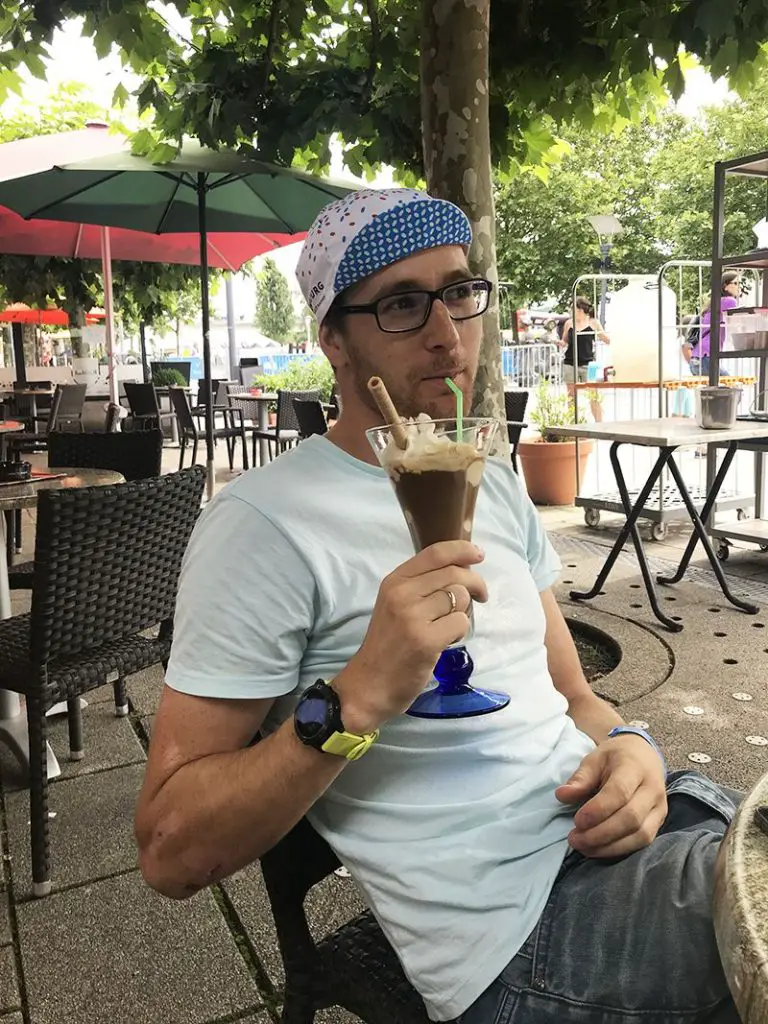
Usually I don’t take the day before a race completely off and try to include a very short session. This time, however, I was in a very relaxed mood and decided to take it easy. After all, it’s only about keeping the body moving and I had a lot of that throughout the day.
Also, our hotel was right in the middle of a long and steep climb, so going for a ride or a run would be too intense.
Overall, the Saturday went surprisingly peaceful. We walked around the Luxembourg a little and came back to the hotel early to do all the preparation (which always calms me down).
Sunday: Race day
The race start was at 9:00 a.m., so the wake up was a very comfortable 6:00 a.m.
With morning race starts I learned that you can never rely on the breakfast at the hotel. So, I always come prepared with my tested on-the-go travel breakfast – oatmeal and banana.
Also this time the breakfast only started at 7:00 a.m. with no possibility of room service. A bit too late for me, as that leaves no time to get to the transition area.
Warmup & prep
It felt a bit hectic in the morning to manage everything and get to the transition area on time. Checking out from the hotel, driving to the parking lot, taking a shuttle bus – too much to focus on.
I promised myself to stay one day longer next time to avoid all those packing and moving stresses, at least.
But in the end it all worked out – tyres pumped, nutrition bottles set up, shoes clipped on. And with enough time for a good warmup.
1 hour before the start I started the warmup. I did most of it on land, skipping the run. After all of the exercises and just before the start I jumped in the pool and did a quick 100m to acclimatize to the water.
IRONMAN 70.3 Luxembourg swim (1.9K) – 32:39
Generally I consider myself to be a good swimmer. I did quite a few practice swims of around 2K and all were in the 30-32 minute range.
However, because I finished the warmup right before the start I came to an already packed corral. To avoid bumping myself through the crowd and get closer to the front, I started closer to a 35-minute group.
The swim course starts against the current for a good 700 meters until the first turnaround. It felt forever, though, as I was passing everyone whom I didn’t want to bump through before the start. I’m pretty sure I did a lot of extra movement in search of some clear water with less people. Only after the turnaround I was able to go more to the side and settle into what seemed like a rhythm.
Next time I should definitely position myself better before the start.
Overall, the swim was ok. It’s a river swim and the water was quite muddy, so you can really see only half a meter underwater. There’s really no way of telling if you’d bump into someone, unless you’re sighting every 4 strokes or so.
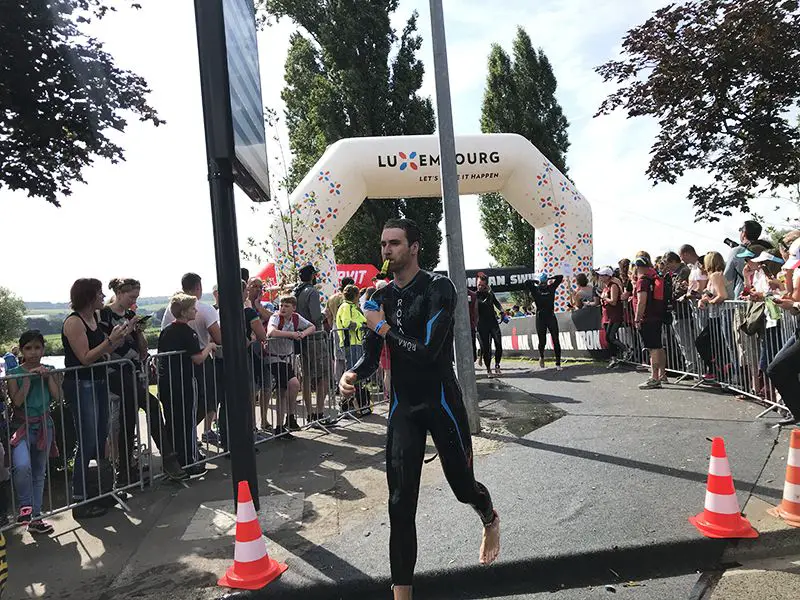
My transition time was 3 minutes flat, but it felt very quick. It took me no more than 30 seconds to take off my wetsuit and put on a helmet, bib and sunglasses. The rest was just running – with or without the bike.
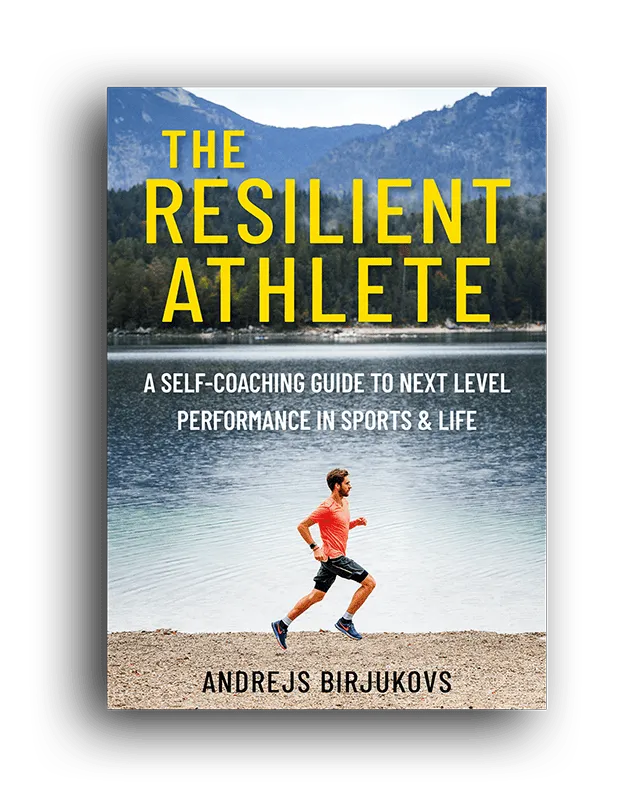
The Resilient Athlete
A Self-Coaching Guide to Next Level Performance in Sports & Life
Are you aiming to become a resilient athlete who is able to withstand any pressure? Be able to jump on any opportunity? Take any challenge life throws at you head on?
Then this book is for you.
Learn moreIRONMAN 70.3 Luxembourg bike (90.1K) – 2:49:49
IRONMAN 70.3 Luxembourg bike course promises around 800m of climbing on the bike, but there’s no elevation gain in the first 35K and last 15K. All the hills are in the middle of the course, making it challenging and not that fast.
I quickly settled into a rhythm and prepared for a long, almost straight and flat 20K section along the river. I was happily averaging 39km/h before the turnaround, when I realized there was solid tailwind. As I did the 180-degree turn, my speed dropped to 34km/h and the next 15K were all into a strong headwind until the first climb of the day.
Still faster than I’ve expected.
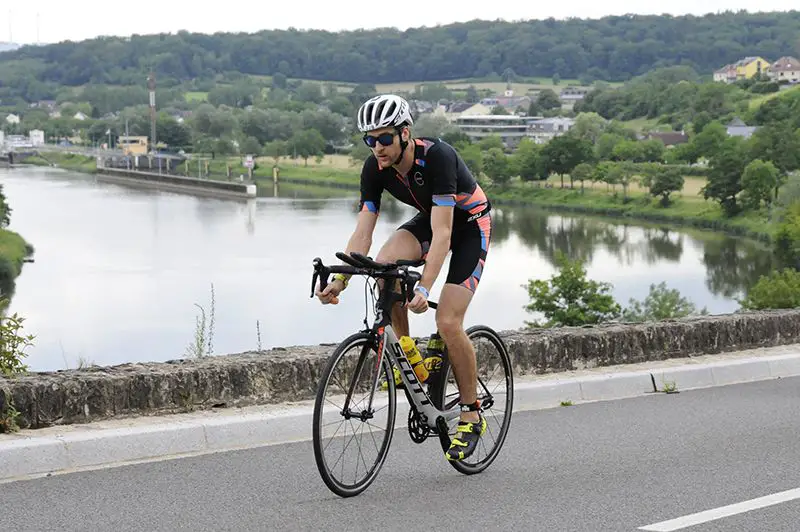
From there on the course passed through vineyards and small villages and had almost no spectators, but lots of hills. In a way it was liberating to be out there with only other triathletes, but towards the end I felt it was too quiet.
Throughout the bike it was painful to stay in aero position all the time due to bruises on my elbow since Kraichgau. Also, the middle of the course was technical with fast descents and tight turns, as well as villages with narrow roads, cobble stones and speed bumps.
I was not confident and braked as much as possible on every descent to avoid repeating my mistakes.
This being my first year in triathlon, I don’t have much experience in cycling. I did try to cycle as much as I could this year (counting commute) and include a couple of 90-100k sessions with some Zone 3 efforts. However, I still felt I lacked the base and was concerned about not being able to hold it until the end.
Related: Train Smart – A Practical Guide to Exercise Heart Rate Zones
Even though I didn’t bike aggressively and tried to stay in Zone 3, towards the 70K mark I felt my legs getting heavy. That’s how tricky the bike course is. You don’t really see some of the hills and are only left to wonder why the speed is dropping. Luckily, that’s when the course started to go downhill and I managed to recover and hydrate.
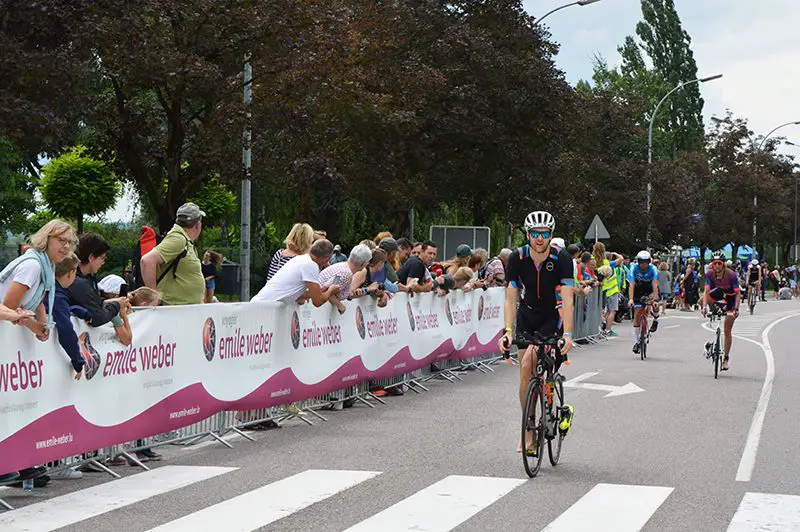
Again, transition felt very fast. But due to the long run (400m) and a toilet break after all the drinking on the bike the total time was long – 3 minutes 56 seconds.
IRONMAN 70.3 Luxembourg run (21.1K) – 1:41:16
Running felt by far as the best part of the race for me. I was very concerned not to over-bike and ended up with a lot of energy to spend on the run.
My plan was to keep a steady heart rate at the top of Zone 3, which should allow me to maintain some good speed throughout the race. I started 20 seconds per km harder than I should, though, and had to drop the pace 10 minutes later.
My pacing still needs work and some dialing in for the next time. I really did not expect the heart rate to take so long to settle in.
Surprisingly for myself, I was able to hold my form and cadence throughout most of the run. Something I was happy about after hours of racing.
Good nutrition on the bike really helped me with that.
IRONMAN 70.3 Luxembourg run course was pancake flat along the Mosel river. Everyone is spread around the 5K loop, so after quite a lonely bike leg it was good to see a big party around.
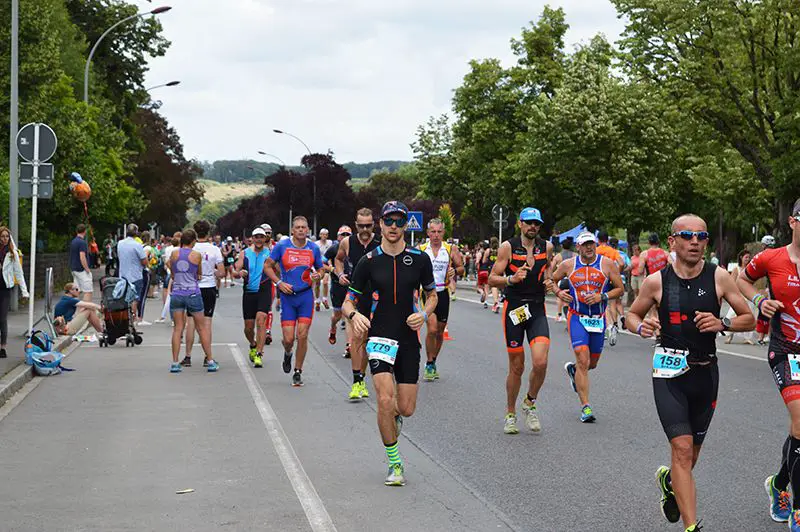
Even though my heart rate was well in Zone 4, I felt strong until the beginning of the last lap when my speed dropped for 2-3K. However, I pulled myself together and focused on the last stretch (~2km) and finished strong.
Lessons from previous marathons learned well. Electrolytes definitely help to avoid fading.
Finish
My final result was 5 hours 10 minutes. To be honest, at this point I don’t really care if it’s fast or slow.
Two weeks after a serious crash I’m happy to be able to finish the race. And also to walk away with a ton of experience in training, nutrition and racing to build on.
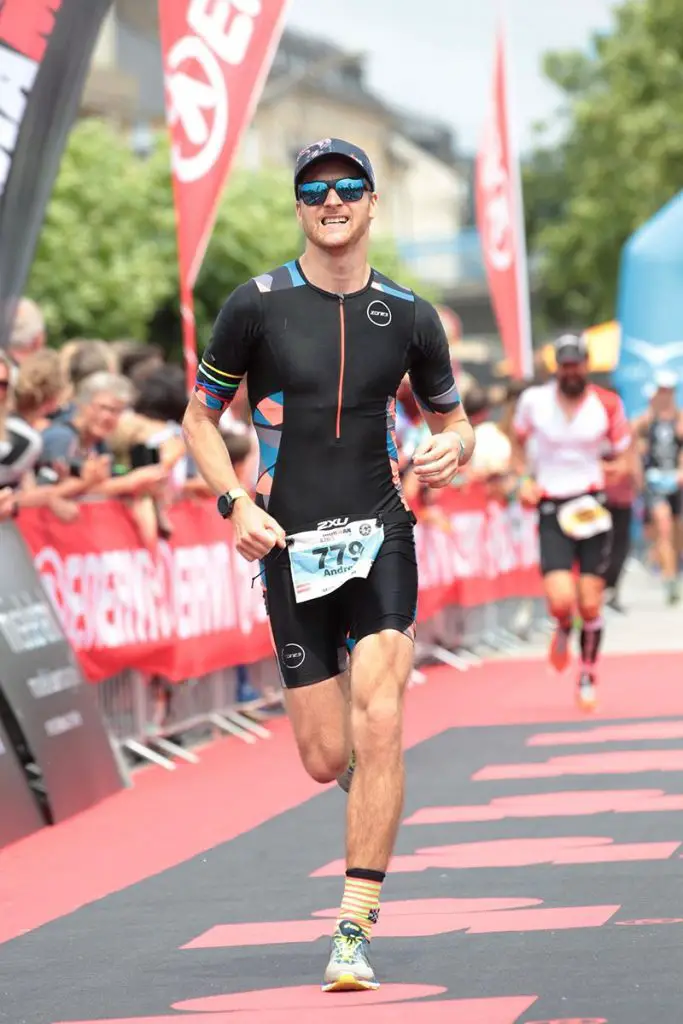
I left it all out there. I might have done a bit better in pacing my run at the beginning, but not sure I’d improve by more than a minute or two. Had I biked harder, I’m not sure if I would be able to maintain the run pace. So, overall I’m very satisfied.
My last 1K was 4:05 and I was very surprised that I was able to pick up the pace that much after 5hrs of racing. Half an hour after the race my insides were cramping and I couldn’t really eat something. I did eat a waffle and started to re-hydrate with some sweet tea and fruits that were there in the athlete village.
My nutrition strategy
Hydration and fueling was the biggest concern for me. Having felt what lack of sodium and carbs does to you during Munich Marathon and NYC Marathon, I was determined to make it right this time.
My focus was to consume around around 45 grams of carbs and 400mg of sodium per hour after the swim leg.
On the bike I had two energy bars that I put in my tri suit pocket during T1 and consumed a half of each every 30-40 minutes. In addition, I drank a total of 3 bottles (500-750ml) of iso drink and 2 bottles of water during the ride.
My run strategy was much simpler. As there were a total of 4 aid stations per lap (2 in every direction), I ate a gel at the beginning of every lap (every 25 minutes, basically) and a sip of water at every other aid station for the rest of the lap.
And that was it.
IRONMAN 70.3 Luxembourg – the verdict
Overall, I enjoyed the course a lot. The river swim against the current was something new to me. The bike course with beautiful scenery, wide and empty roads and fast & technical sections was surreal. And the run was just one big party with a lot of support and action.
It was also a healthy mix of challenge and performance for me.
If there weren’t other locations for 70.3 races, I’d totally do this one again. For now, though, I still want to travel around and race in different locations
What next?
After IRONMAN 70.3 Luxembourg I took 2 weeks completely off and went to a surf camp to relax and refocus.
Surfing is a much more technical sport that requires stability and strength in smaller muscles. It was a great way to recover from training and the race. Also, it was great to work on the core muscles before my next build for Berlin Marathon in Autumn.
Have an opinion? Share via links below and tag @theathleteblog
Tags In
Andrejs Birjukovs
GET A FREE TRAINING PLAN
Subscribe to my email list and get access to a free 4-week “back in shape” training plan
You’ll also get two full-body strength sessions and some other goodies!
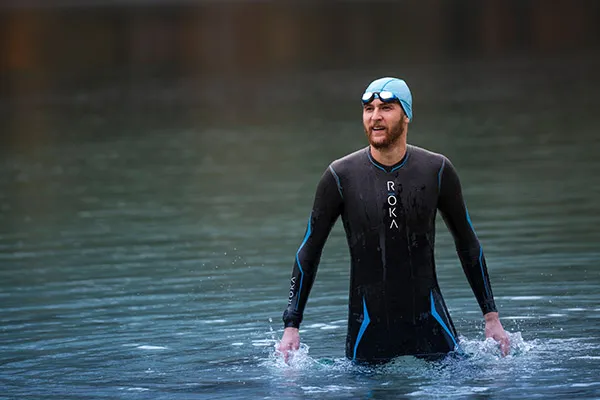
How did I get here?
Hey there! My name is Andrejs and I am here to inspire, entertain and get you fit for any adventure.
I went from being an over trained pro athlete to an endurance coach sharing how to listen to your body and live life to the fullest.
Traveling, new sports & activities brought new meaning to my training and made it much more effective, fun and enjoyable. And I'm here to help you do the same.
